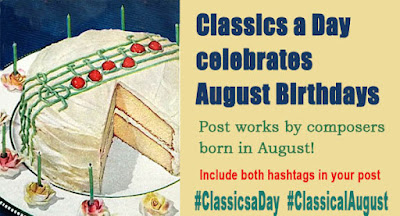These days we commemorate life events with photos and videos shot on smartphones. In the 1700s, there were other options -- if you were wealthy enough. And Louis XV, King of France certainly was.
His father, Louis XIV, habitually commissioned large-scale musical works for important events. Weddings, birthdays, dignitary visits, etc. were all worthy of a large-scale production. This release features two such works from the reign of his son.
"Le Retour de Dieux sur la Terre" celebrated the wedding of Louis XV and Marie Leszczynska in 1725. The second divertissement is "Le Caprice d'Erato." It premiered in 1729 to mark the birth of the couple's first son.
Both were intended as light entertainment -- light lavish entertainment, that is. Both feature large casts, mostly portraying allegorical figures.
The singers deliver their melodies with delicacy and simplicity. The choruses are sufficiently robust. This is music meant to entertain, and so it does!
De Blamont is an effective orchestrator. Recorders signal a pastoral setting. Hunting horns accompany Diana, the goddess of the hunt. Percussion sounds during the ballets, and low double reeds provide effective tonal color.
The Helsinki Baroque Orchestra has a bright, crisp sound. Their energetic readings of the dance numbers help keep things moving along.
This release doesn't include the librettos, but they're not necessary. There's no drama here. These are set pieces with various gods and goddesses praising the king and queen (or king, queen, and heir).
Although these were occasional works, they did have staying power. "Le Retour de Dieux sur la Terre" premiered in 1725. It was performed either in its entirety or in excerpts for the Queen through 1748.
And they still entertain today. Especially with these performances.
Colin de Blamont: Le Retour de Dieux sur la Terre
Le Caprice d'Erato
Les Chantres du Centre de musique baroque de Versailles
Helsinki Baroque Orchestra; Alexis Kossenko, conductor
Chateau de Versailles CV139 CD
2 CD set














